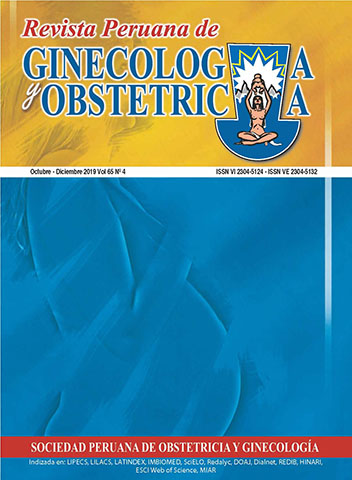Factors associated with higher pregnancy rates in intrauterine insemination
DOI:
https://doi.org/10.31403/rpgo.v65i2201Abstract
Introduction: Intrauterine insemination is part of the strategies for initial management in infertile couples. However, limited research has taken place in our country regarding its effectiveness in the pursuit of pregnancy, and it is therefore important to define patients, indications and conditions associated with higher rates of clinical pregnancy. Objective: To identify factors associated with clinical pregnancy in intrauterine insemination. Methods: Retrospective study in 633 infertile couples at the Centro de Fertilidad y Ginecologia del Sur, Cusco, Peru. 1 053 cycles of intrauterine insemination were performed in both spontaneous and stimulated ovulation, with double or single insemination performed before or after ovulation, using a semen sample from the spouse, processed either by swim-up or by density gradients. Results: Clinical pregnancy rate was 8.2% per insemination cycle and 13.6% per couple. Factors most closely associated with clinical pregnancy were having two or more follicles (OR: 2.873), procedure performed without difficulty (OR: 2.341), duration of infertility of 3 years or less (OR: 2.240), cervical factor infertility (OR: 2.194), use of gonadotropins (OR: 1.846), and woman’s age 38 years or younger (OR 1.819). Conclusions: We obtained an acceptable clinical pregnancy rate with intrauterine insemination in this study. This process requires couples to be properly selected and prepared.Downloads
Download data is not yet available.
Downloads
Published
2019-10-02
How to Cite
Vargas-Tominaga, L., Alarcón, F., Vargas, A., Medina, A., Vargas, A., Gómez, M., Escobedo, D., & Gallegos, M. (2019). Factors associated with higher pregnancy rates in intrauterine insemination. The Peruvian Journal of Gynecology and Obstetrics, 65(4), 437–442. https://doi.org/10.31403/rpgo.v65i2201
Issue
Section
Artículos Originales
















